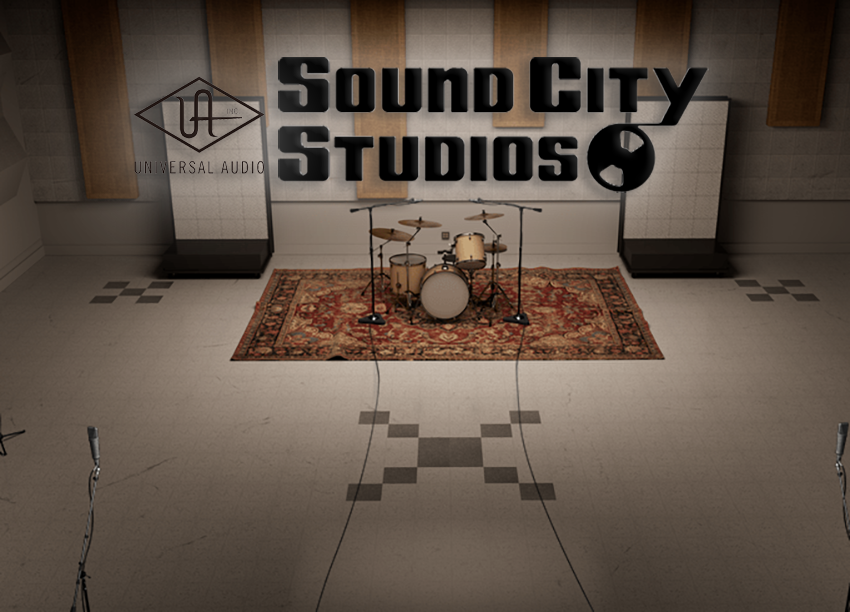We can’t all book out a world-class recording studio, it’s just not possible. But here’s some good news: Universal Audio has made it possible to sound like you’ve just tracked in one of the most legendary live rooms of all time — and it’s affordable for almost anyone! Universal Audio’s Sound City Studios plug-in is the most accurate digital model ever created of the legendary studio where greats like Metallica, Nirvana, and Fleetwood Mac have tracked their records. With most of us tracking drums in a closed-off basement or unsatisfactory environment, this is an incredible option to immediately take your dry, weak tracks to the next level with a few clicks. This is a rundown of the larger-than-life Sound City Studios software from Universal Audio.
History in a Box
Sound City Studios was opened in 1969 inside of an amplifier assembly building originally used by Vox Amplification. With an unusually shaped live room, Sound City has become synonymous with larger-than-life drum sounds and the “live feel” of the records that came out of there in the late 20th century. Though it was a large, boxy room that wasn’t traditionally sized for recording studios of the time, the studio’s unique sound has become a magical part of any recording to come out of Sound City. Legendary acts like Fleetwood Mac, Nirvana, Johnny Cash, Tom Petty and the Heartbreakers, and many more tracked some of the most influential records of all time within the four walls of the Sound City live room. Universal Audio, with the help of Sound City’s own staff archivers captured the timeless sound of not only the famous room and Neve 8028 mixing console, but its signature signal processing, effects, and the vintage microphones used on some of the most legendary sessions.
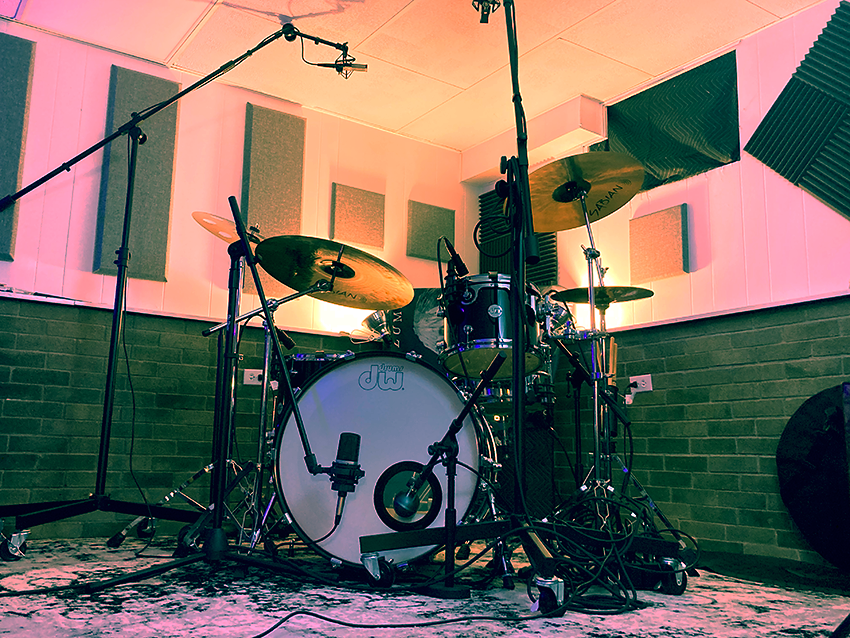
Going Big With Re-Mic
When you first open the Universal Audio Sound City Studios plug-in you’ll be treated to a visual of the live room, drums set against the wall with microphones flanking from each side. Staying within the “DRUMS” category (selectable at the top of the plug-in window) you have three options: Live, Tight, and Corner. Each base preset lets you work with some of the vintage mics in the mic locker at Sound City, including classic ribbon and condenser mics from AKG, Neumann, and RCA. Each of these settings hosts a plethora of additional options, tweak-able effects, and even moveable microphone placement. Some of the work has even been done for you: just enter the preset menu, select drums, and browse these curated settings from Universal Audio engineers and even famous artists and producers.
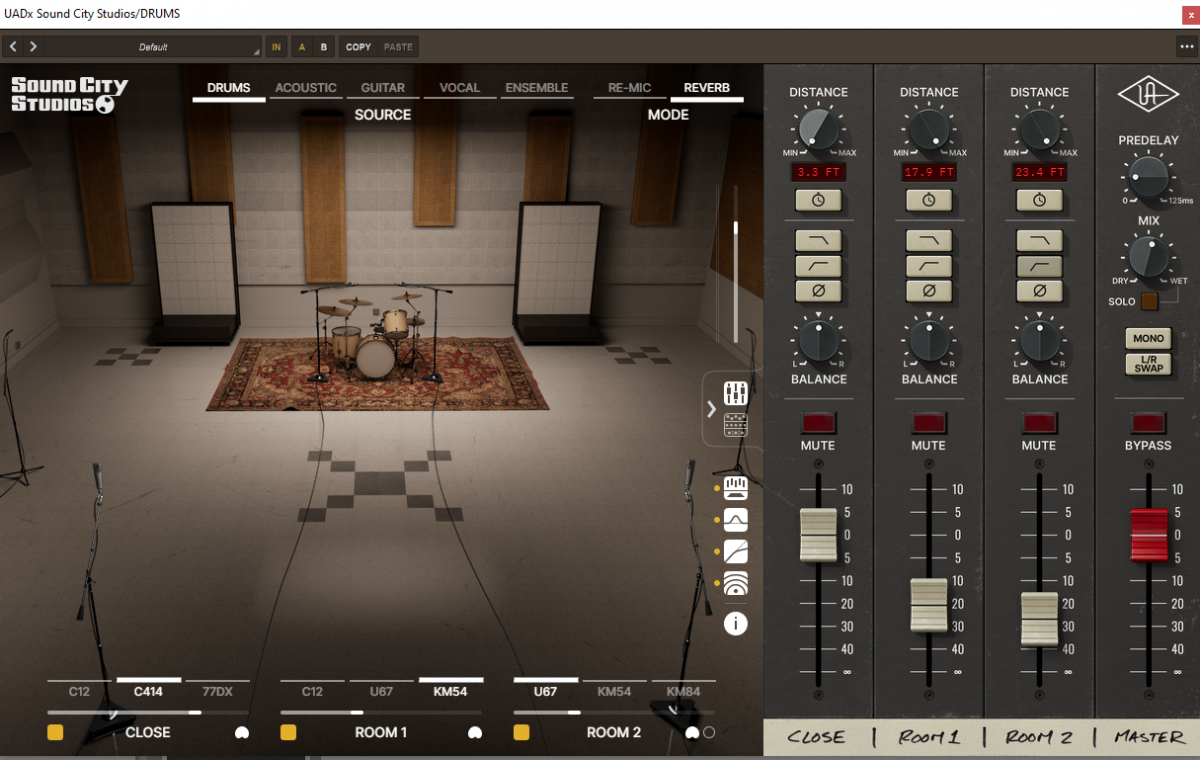
But just to get started, let’s take a look at the three base settings, starting with “LIVE”. LIVE is just as it states: drums back against the wall of Sound City’s live room with a fully open floor in front of them — as open and live as it gets. Think Dave Grohl’s drum sound on the Nirvana record Nevermind. The room being so open and the drums against the back wall projects a ton of the natural low end of any kit you put in front of it. You can even hear the “flam” from snare hits against the “walls” the plug-in models. It’s a trip to the full essence of Sound City: huge tones and a larger-than-life feel.
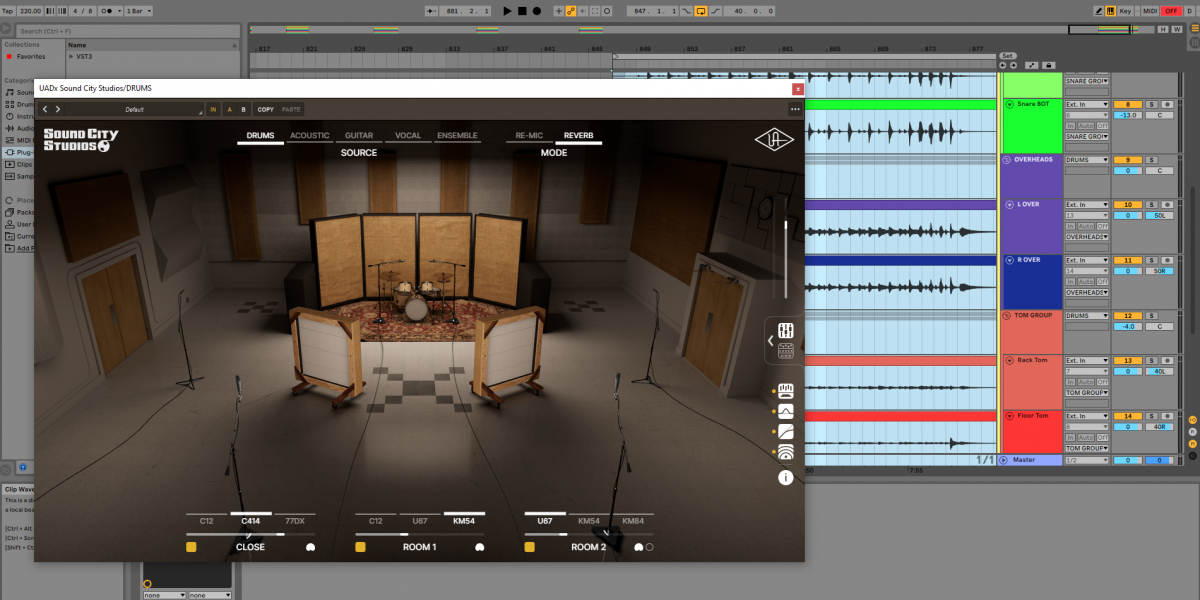
“TIGHT” is similar in that its placement is identical to “LIVE” but you start to see gobos (free-standing acoustic panels used to isolate microphones in a room) appear in front of and behind the kit on screen, making your sound go from full and open, to more focused, with less of the overall room sound beefing up the low-end. Sound City staff have stated that Fleetwood Mac would often record with gobo isolation.
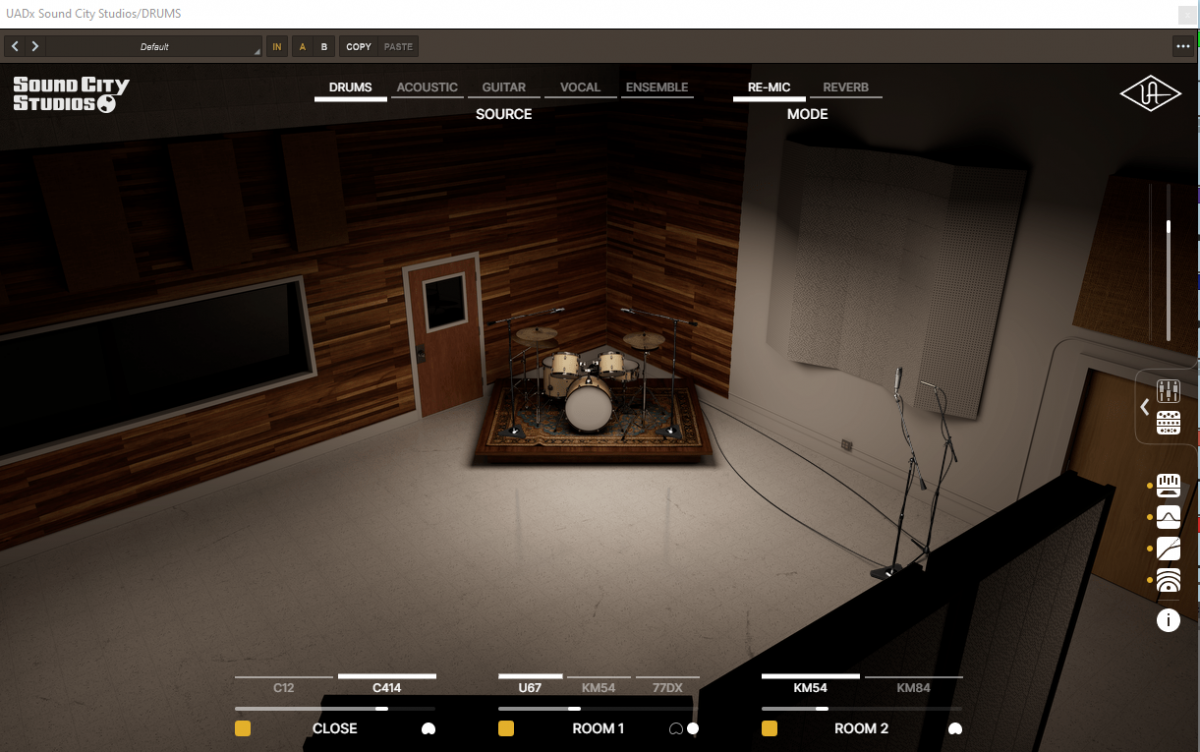
Finally, “CORNER” is where the drum kit appears in the wood corner next to the control room window at Sound City with gobos isolating the front of the control room. This setting is immediately identifiable and transports you directly to that corner of the studio in a mix. You can hear cymbals and snare slap off the walls directly behind the kit, with a delay-like repeat making for a kit with defined high-end while remaining punchy at the low-end for kick hits and tom grooves. According to Sound City history, this was precisely how Tom Petty and the Heartbreakers liked to track when using the room.
A Reverb, Compressor, and Even the Console!
You couldn’t have Sound City without the legendary Neve 8028 mixing console and all the dreamy tones that come with it. Every sound that passes through the Universal Audio Sound City Studios plug-in is colored by a model of this exact console. You can even bring it up when mixing your Close, Room 1, and Room 2 mic options in the plug-in. Then, flipping over the effects rack menu, dive into a modeled vintage three-band equalizer, a dynamics rack that includes a vintage 1176 modeled at Sound City, the first-ever emulation of the Dolby A301 noise reduction system, and even more options, and an echo chamber that acts as a reverb send with selectable mics from the one used at Sound City Studio.
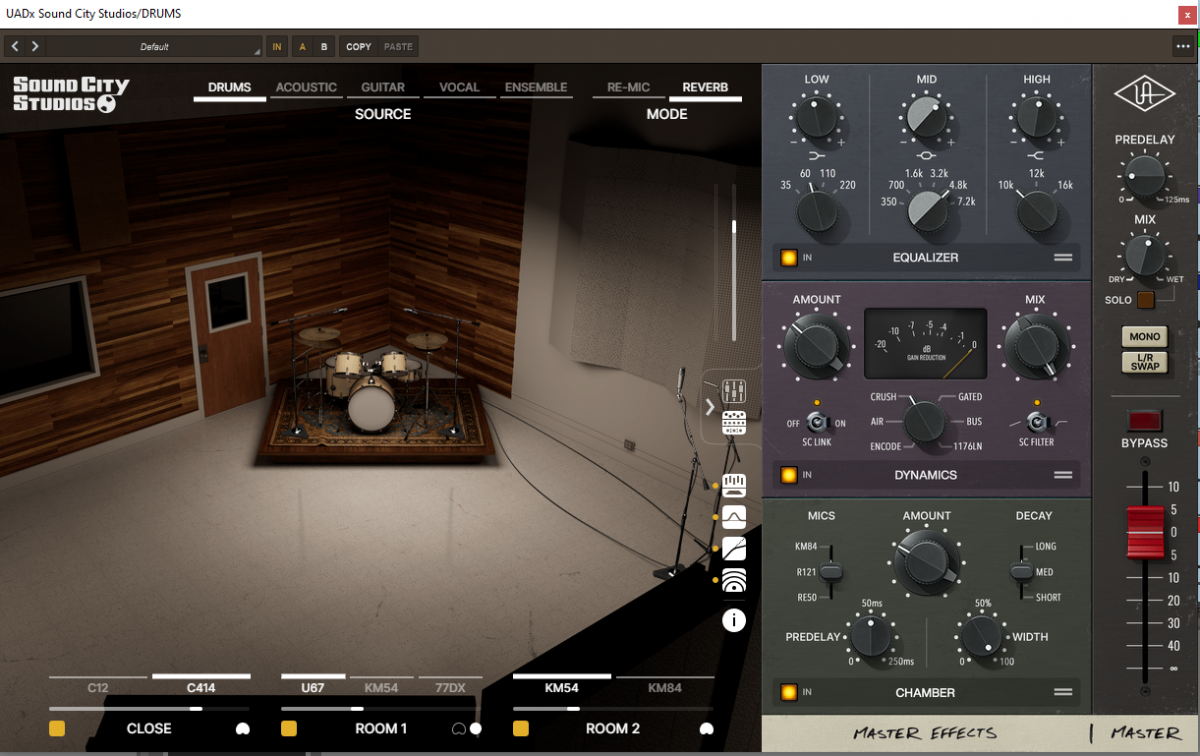
And although this plug-in sounds fantastic with all your microphones sent though the “Re-Mic” setting, UAD’s Sound City Studios plug-in offers a “Reverb” setting that allows for blending of a dry signal along with the full plug-in settings and tone you’ve crafted.
Sound City Studio’s history is vast and packed with some of the greatest music ever recorded. Though Sound City Studio is still in operation and pumping out tracks on a daily basis, the masses’ thirst for its signature sound is never truly quenched. That’s why Universal Audio’s incredible effort in modeling the room, console, effects, microphones, and intangibles from Sound City are such an amazing resource to musicians everywhere.

